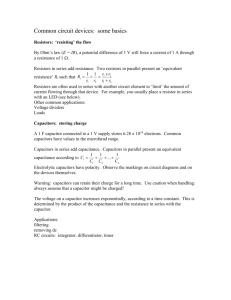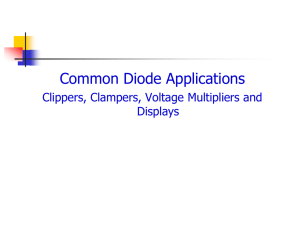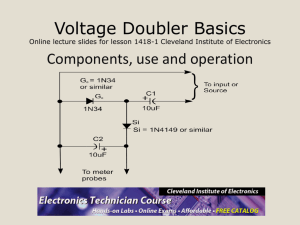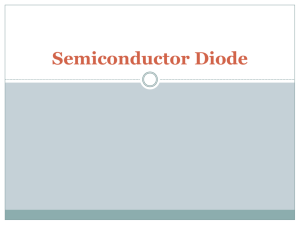Diode Clippers, Clampers & Voltage Multipliers
advertisement
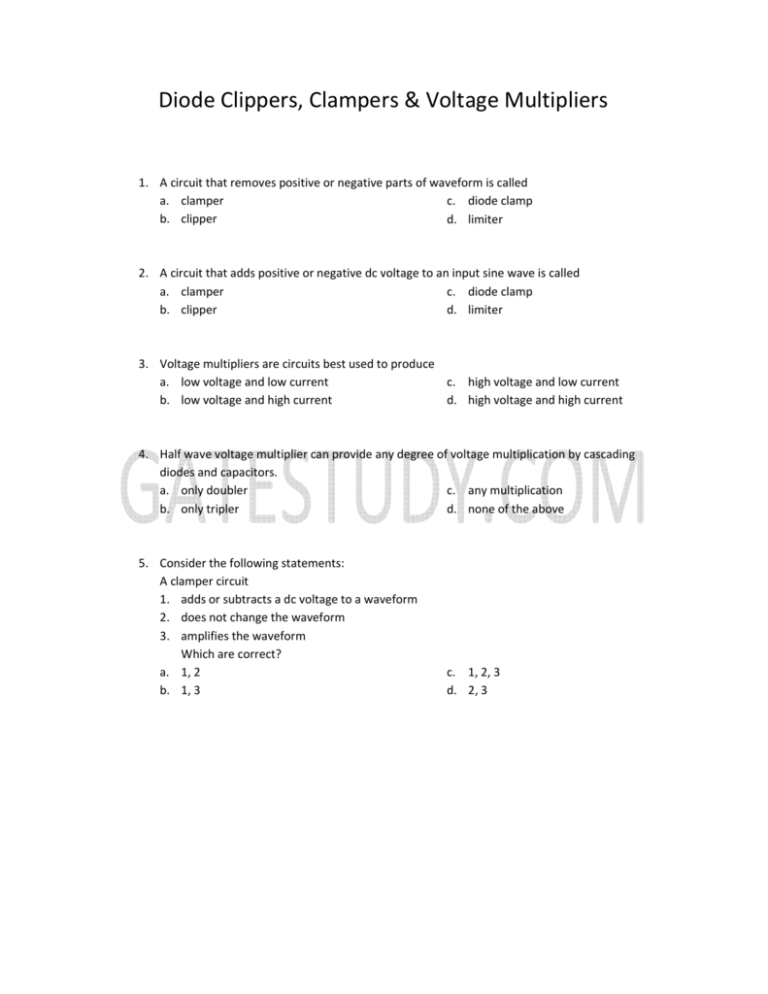
Diode Clippers, Clampers & Voltage Multipliers 1. A circuit that removes positive or negative parts of waveform is called a. clamper c. diode clamp b. clipper d. limiter 2. A circuit that adds positive or negative dc voltage to an input sine wave is called a. clamper c. diode clamp b. clipper d. limiter 3. Voltage multipliers are circuits best used to produce a. low voltage and low current c. high voltage and low current b. low voltage and high current d. high voltage and high current 4. Half wave voltage multiplier can provide any degree of voltage multiplication by cascading diodes and capacitors. a. only doubler c. any multiplication b. only tripler d. none of the above 5. Consider the following statements: A clamper circuit 1. adds or subtracts a dc voltage to a waveform 2. does not change the waveform 3. amplifies the waveform Which are correct? a. 1, 2 b. 1, 3 c. 1, 2, 3 d. 2, 3 6. The circuit given in the figure is: a. positive clipper b. negative clipper c. dual clipper d. either (a) or (b) R Vi D1 D2 RL V0 V2 V1 7. In the above figure D1 turns on when a. Vi is more positive than V1 b. Vi is less than V1 c. Vi is between V1 and V2 d. none of the above 8. In the given Figure D2 turns on when a. Vi is more positive than V1 b. Vi is less positive than v1 c. Vi is more negative than V2 d. Vi is less negative than V2 9. A voltage tripler circuit uses a. 2 diodes and 2 capacitors b. 3 diodes and 3 capacitors c. 2 diodes and 3 capacitors d. 3 diodes and 2 capacitors 10. A voltage doubler circuit is fed by a voltage Vm Sin ωt. The output voltage will be nearly 2 Vm only if a. load resistance is small b. load resistance is large c. load resistance neither small nor large d. either (a) or (c) Answers 1. (b) 2. (a) 3. (c) 4. (c) 5. (a) 6. (c) 7. (a) 8. (c) 9. (b) 10. (b)


